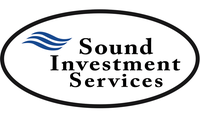Retiring on a low income may seem difficult. However, living comfortably in retirement with the right strategies, resources, and investment choices is still possible.
To begin, you need to calculate what your potential retirement pay will probably be so you can prepare for what to do once you arrive.
Although these are general guidelines from David Snavely that should be tailored to your specific circumstances. I am only providing you steps that will help you in navigating the complexities of low-income retirement planning.
Collaboration with a financial advisor might be beneficial if you want to improve your low-income retirement and achieve your objectives.
How to Calculate Your Potential Retirement Income?
Knowing your current expenses and income is the most effective method for estimating your potential retirement income.
A retirement number cruncher can assist you with deciding your future monetary requirements when you arrive at retirement age. This is the underlying move toward helping you determine to either go on with a low-pay retirement way of life or further increment the sum you can save before retirement.
The location of your assets and the likelihood that those assets will grow between now and retirement will significantly impact how much money you will have in retirement. For instance, if your resources are basically in the securities exchange, you can assess that regular return after some time; however, if they’re in land, they will rely upon the market.
According to David Snavely When estimating your retirement purchasing power, it’s important to take economic factors like inflation into account as well. You can use government resources to project inflation or a specific tool to estimate what inflation might cost you from now until retirement age.
Retirement Assistance Programs for Low-Income Individuals:
There are lots of retirement support programs for low-income individuals. Understanding these projects and their advantages can essentially work on your financial security during retirement. This can be accomplished by referring to official government websites to protect against fraud and ensure accuracy. Here are a few projects that you could utilize:
- Benefits from Social Security: The majority of retirees rely heavily on the Social Security Administration’s benefits.
- Medicare: When you arrive at the age of 65, you can meet all requirements for government medical care, which is medical care that accompanies a reduced expense.
- Medicaid: All people below the poverty level might meet all the requirements for Medicaid. It covers all of your well-being costs.
- Food Stamps: You might be a candidate for food stamps. It helps you pay for groceries.
- Supplemental Security Income: David Snavely explains that SSI is a government program for disabled or low-income individuals.
- Housing Assistance: Some may be eligible for USDA or local state housing assistance to buy or rent a home. In certain states, lodging is explicitly accessible for those in retirement with low pay.
Tips for a Low-Income Retirement Budget:
Budgeting is essential for a more secure low-income retirement. You might need to utilize a budgeting plan if you struggle with your pay. The most awful thing you can do for your retirement investment funds is to spend more than your monthly income. This could prevent you from saving for your retirement now and meeting your retirement expenses.
Arranging travel and appropriately overseeing debts can prove to be useful. When you reach retirement, it’s critical to save for big expenses. Therefore, if you want to travel, you must first save money.
You might need to think about scaling back or moving to a more affordable region once you hit retirement so your monthly expenses are not as much as while you’re working all day.
Expansion of your investment portfolio might assist with lower risk David Snavely says. However, it isn’t a reliable method for protecting your retirement reserve funds.
The best thing you can do is prepare now while you are working. The longer you have until retirement, the more you might need to consider an expansion technique. Always contact an advisor for professional advice.
